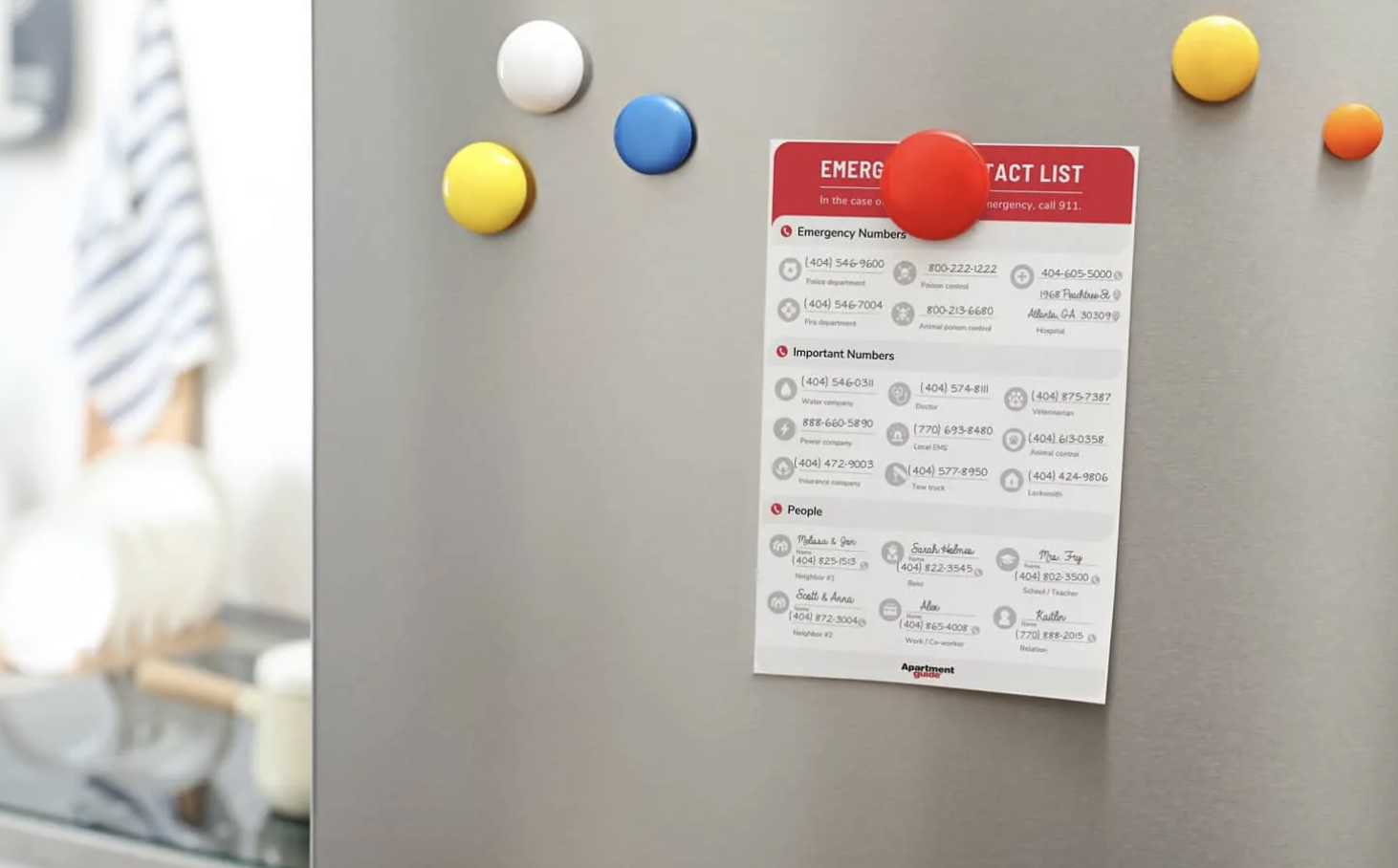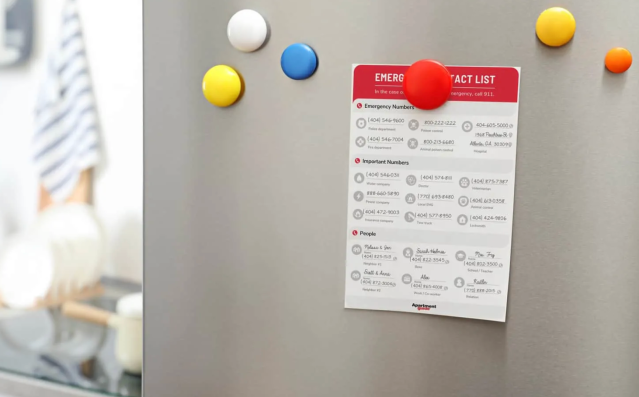
As a parent, safety is your number one priority, especially when it comes to your little ones. While you want to let your children feel independent and free to explore and learn on their own, it’s hard to avoid worrying over the possibility of an emergency situation.
To help you and your family prepare for an emergency (from fires to flooding and everything in between), ApartmentGuide compiled a list of the most important emergency phone numbers you should have on hand. There’s also a printable template you can download for free—fill it out with your area’s information and hang it up somewhere visible in your home. You’ll rest easy knowing your family knows who to call and what to do in the event of an emergency.
Below are more than 20 of the most important emergency phone numbers you should have close by. Read through the list below, then research your local number for that category.
General Emergencies: 911
This first number is one most people should know. 911 is the best phone number for general emergencies, but should not be used for minor incidents or non-emergency situations (in fact, it’s illegal to call 911 for non-emergency situations). As a general rule, calling 911 should be reserved for scenarios where a person’s life, health, safety, or property is in immediate danger.
911 is for North America only—if you live outside the United States or Canada, there may be another number for the same type of emergency service.
When to call 911:
-
Crime in progress
-
Life-threatening situations
-
Domestic violence
-
Fires
-
Traffic accidents
-
Hazardous chemical spills or waste
-
Fire, smoke, or carbon monoxide alarms that go off
-
Explosives
-
Elevator rescues
-
Fuel spills
-
Smoke within a building
-
Air emergencies
-
Beach or water-related emergencies
If you or a child dials 911 by accident and an emergency is not taking place, do not hang up. Wait for a responder to answer the call, then explain that the number was dialed by mistake. Hanging up the phone before a responder answers could result in emergency services at your door.
Local Police Department
Calling the police department is not the same as calling 911. Phoning your local police directly can be done for the following reasons:
-
Non-threatening crimes—no injuries and suspects are no longer on the scene
-
These include theft, stolen cars, vandalism, harassment, trespassing, threats, or cases of assault involving non-serious injuries.
-
-
Minor traffic accidents—no injuries and no threats to surrounding traffic
-
Noise disturbances—excessively loud music, parties, suspicious sounds
-
Hazardous road conditions—disabled vehicles, debris in the roadway, damaged or malfunctioning traffic signs and signals
Poison Control: 1-800-222-1222
If you or a family member has ingested a toxic substance, your first call should be to the American Association of Poison Control Centers. A responder can answer questions regarding the toxicity of various substances and liquids and will recommend a course of action depending on the circumstances.
Your Very Own Printable Emergency Contact List
Download the printable template here, fill out the information and phone numbers, then hang the printable in a highly-visible place in your home (refrigerator doors, hallways, and entryways are some of the best places).
Be sure to discuss the importance of emergency preparedness with your family. For those with young children, it can be helpful to teach them to memorize their full name, address, and a parent’s phone number in case they find themselves without an adult’s help.
If you’re hiring a babysitter for a night out, be sure to point out the printable contact sheet before leaving. These numbers are especially helpful for sitters or other guests who may need help in an emergency situation.












